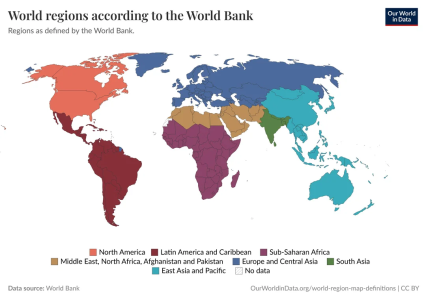- Joined
- Jul 17, 2010
- Runs
- 32,421
- Post of the Week
- 2
I saw this new world bank map floating about social media.
It looks like they have shifted Pakistan and Afghanistan to be grouped with Middle East rather than their previous grouping as South Asian.

What do you make of this? It seems quite arbitrary.
I don't really even consider Iranians as Middle Eastern, but also don't consider Afghans as South Asians.
Pakistan is unique in that it can straddle multiple different, groupings but I do feel that either a seperate classification of Iran Afghanistan and Pakistan would be most appropriate, or just keeping as is within South Asia.
It looks like they have shifted Pakistan and Afghanistan to be grouped with Middle East rather than their previous grouping as South Asian.

What do you make of this? It seems quite arbitrary.
I don't really even consider Iranians as Middle Eastern, but also don't consider Afghans as South Asians.
Pakistan is unique in that it can straddle multiple different, groupings but I do feel that either a seperate classification of Iran Afghanistan and Pakistan would be most appropriate, or just keeping as is within South Asia.







